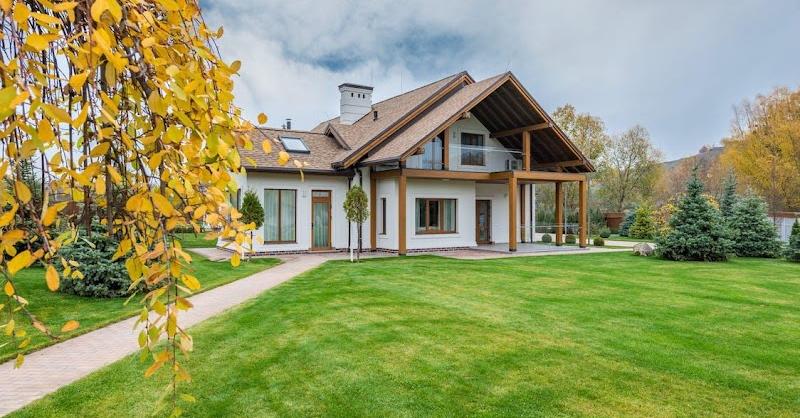In the diverse landscapes of North Carolina, from the rolling Appalachians to the bustling streets of its cities, many homeowners face the challenge of making the most out of limited living space. Small houses, typical in historic neighborhoods or as modern, efficient dwellings, require a mix of creativity and practicality to feel spacious and comfortable. This article provides essential tips for residents looking to expand their living space without physically adding square footage. By leveraging design tricks and smart organization, even the coziest North Carolina cottage can feel significantly larger.
1. Declutter and Simplify: The first and most cost-effective step in making a small house appear bigger is to declutter. Removing unnecessary items and simplifying your space can dramatically change how large it feels. Start by sorting through your possessions and keeping only what is essential or brings you joy. Use clever storage solutions to keep everyday items out of sight but within easy reach. Remember, a minimalistic approach can have a maximal impact on the perception of space in your home.
2. Enhance Natural Light: Natural light can transform a cramped space into an open, airy one. To maximize light, consider updating your window treatments or installing larger windows. In the Charlotte area, homeowners can look up the keyword Charlotte Window Replacement experts near me on a search engine to find professionals who can advise on the best window designs to bring in more light. Additionally, positioning mirrors opposite windows can reflect light throughout the room, further enhancing the feeling of spaciousness.
3. Smart Furniture Choices: Furniture selection is crucial in a small space. Opt for pieces that are proportionate to your room size and offer multiple functions. For example, a sofa that turns into a bed can serve as seating during the day and convert into a guest bed at night. Choose furniture with legs to create a sense of openness, and consider floating shelves or wall-mounted desks to free up floor space. Being strategic with your furniture not only saves space but also keeps the area functional and stylish.
4. Use of Mirrors and Reflective Surfaces: Mirrors are a decorator’s secret weapon in small spaces. When placed strategically, they can create the illusion of depth, making a room appear larger than it is. A large mirror on one wall or a group of smaller mirrors can effectively double the visual space. Additionally, using glossy finishes and reflective surfaces on furniture or décor items can amplify light and give the room a more open feel.
5. Opt for Light Colors and Simple Patterns: The colors and patterns you choose for your walls, floors, and furnishings greatly impact the perception of space. Light colors, in particular, make rooms feel more open and airy. Painting walls in soft tones like off-white, light blue, or pale gray can visually expand a space. When it comes to patterns, keep them simple and unobtrusive. Large, bold patterns can overwhelm a small space, while subtle, monochromatic patterns can contribute to a sense of order and spaciousness.
6. Effective Use of Vertical Space: In small houses, every inch counts, and this includes the vertical space. Utilizing walls for storage and decoration can free up valuable floor space. Installing floating shelves, tall bookcases, and wall-mounted cabinets allows you to keep essentials within reach without cluttering the room. Hanging plants or wall art can also draw the eye upward, creating a sense of height and openness. Consider wall-mounted lighting fixtures to save space on tables and floors, further enhancing the room’s spacious feel.
7. Open Floor Plans and Flexible Spaces: Embracing an open floor plan can make a small home feel significantly larger. If possible, consider removing non-structural walls to create a more open, flowing layout. This approach not only maximizes physical space but also improves social interaction and light distribution. In addition, creating flexible spaces that can serve multiple purposes, such as a dining area that doubles as a workspace, can greatly enhance the functionality of a small home without compromising on space.
8. Outdoor Integration: Extending your living space outdoors can create the illusion of a larger home. Even a small balcony, patio, or backyard can become a valuable extension of your living area. Use outdoor furniture, plants, and lighting to create a cozy, inviting outdoor space. If privacy is a concern, consider using screens or tall plants. This approach not only adds to your living area but also provides a refreshing change of scenery and a connection to the outdoors.
9. Custom Storage Solutions: Custom storage solutions are particularly effective in small homes, where every square foot matters. Tailored storage options can maximize space and fit into awkward corners or under-utilized areas. Think about custom-built shelving in alcoves, pull-out cabinets in the kitchen, or built-in wardrobes in bedrooms. These solutions can keep your belongings organized and out of sight, contributing to a cleaner, more spacious environment.
10. Regular Reassessment and Rearrangement: Finally, regularly reassessing and rearranging your space can keep it feeling fresh and spacious. Over time, our needs and lifestyles change, and our living spaces should evolve to reflect this. Periodically moving furniture, decluttering, and reorganizing can uncover new ways to optimize space. This practice not only helps in maintaining a spacious home but also renews your environment, keeping it functional and enjoyable.
Conclusion: Making a small house feel bigger is an art that combines smart design with practical solutions. From decluttering and maximizing natural light to custom storage and flexible layouts, each strategy contributes to creating a more open, airy, and enjoyable living space. These tips not only enhance the functionality of your home but also its aesthetic appeal, proving that even the smallest homes can feel spacious and welcoming with the right approach. Remember, the goal is not just to create space but to craft a home that feels expansive and suited to your lifestyle.
